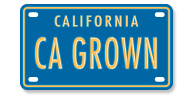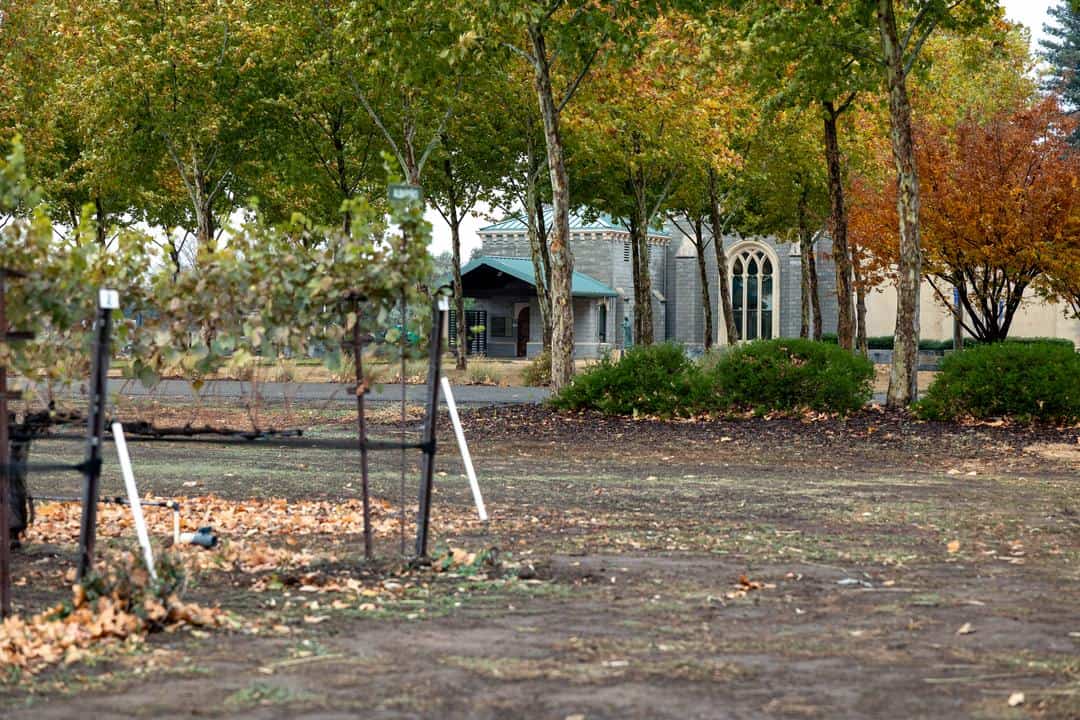New Clairvaux Vineyard: Rich History, Bright Future
The tale of New Clairvaux Vineyard reads a bit like a “who’s who” of California history. This historic winery’s past is rivaled only by its unique varietals and bright future.
New Clairvaux Vineyard – Where the past meets the present
New Clairvaux’s winery and vineyards are steeped in history – but the present is just as intriguing as its past. With a renowned fifth-generation female winemaker at the helm, a unique selection of unusual varietals and a charming off-the-beaten-path tasting room, New Clairvaux Vineyard is a worthy detour for anyone traveling through Northern California.
A tale of two vineyards
During our recent visit to New Clairvaux Vineyard, we met with New Clairvaux’s general manager, John Adams. We were eager to taste New Clairvaux’s award-winning wines but wanted to learn a little more about the vineyards first. To that end, Adams led us to the certified organic St. James Block, which is adjacent to the winery. “In 2000, they (New Clairvaux) planted twin vineyards; one called the St. James Block here at the Abbey, the other across the highway on the Sunseri property called the Poor Souls Block. They were both just five-and-a-half-acre experimental vineyards.” He continues, “They both have very unique terroir. So, they grow different types of grapes in both locations.”


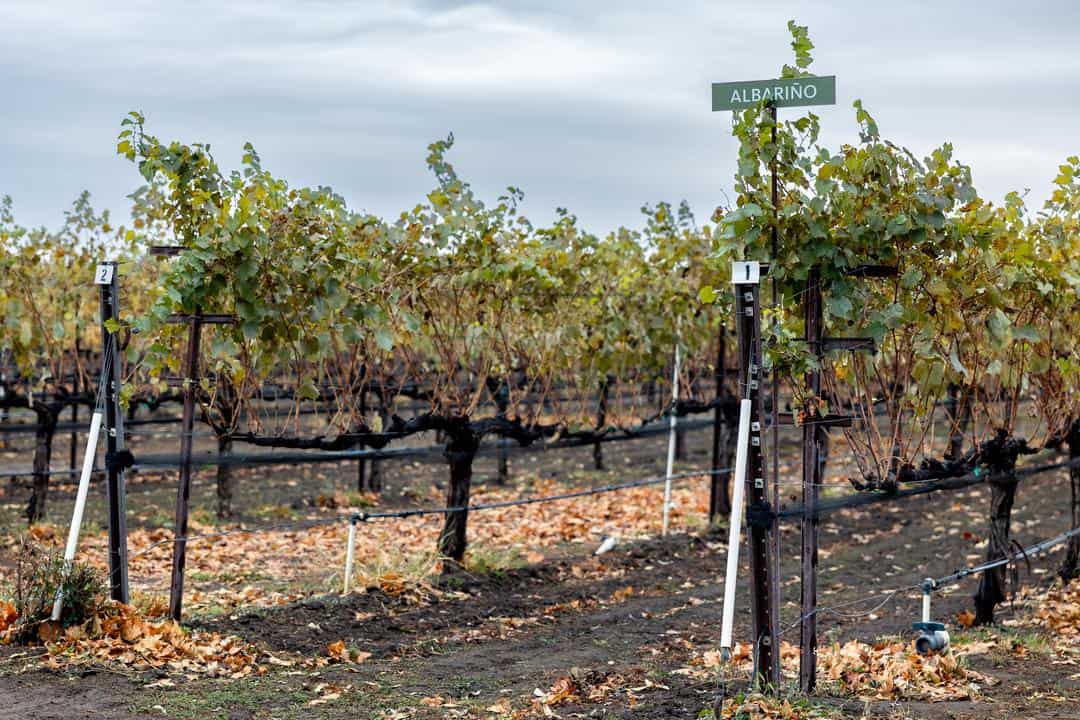
As we walked through the vines of the St. James Block, Adams explained, “They grow Syrah, Tempranillo, they grow Albarino. They also grow Assyrtiko and Moschofilero – we’re the first in the Americas to grow these two grapes. One comes from the island of Santorini, and the other one comes from the Peloponnese East Peninsula. You’ll notice that they’re all hot weather varietals and it’s pretty hot here.”
The nearby Poor Soul’s Block grows a mix of Spanish, French and Italian winegrapes, including Barbera, Tempranillo, Viognier, Grenache and Muscat Blanc. Adams adds, “We make 21 basic varietals and 31 wines. That’s a lot of wine off a little 31-acre area!”
A time-honored commitment to sustainability
A few eagle-eyed readers may have picked up on a curious statement Adams made while explaining the location of the St. James Block – that the vineyard was “here at the Abbey”. New Clairvaux is the result of a partnership between the Sunseri family and Cistercian monks. The roots of this unusual partnership began in 1955 when a group of Trappist-Cistercian monks purchased 600 acres of the property once known as the Great Vina Ranch. In the late 1800s, the Great Vina Ranch was the world’s largest winemaking operation – but that was before prohibition annihilated the California wine industry.
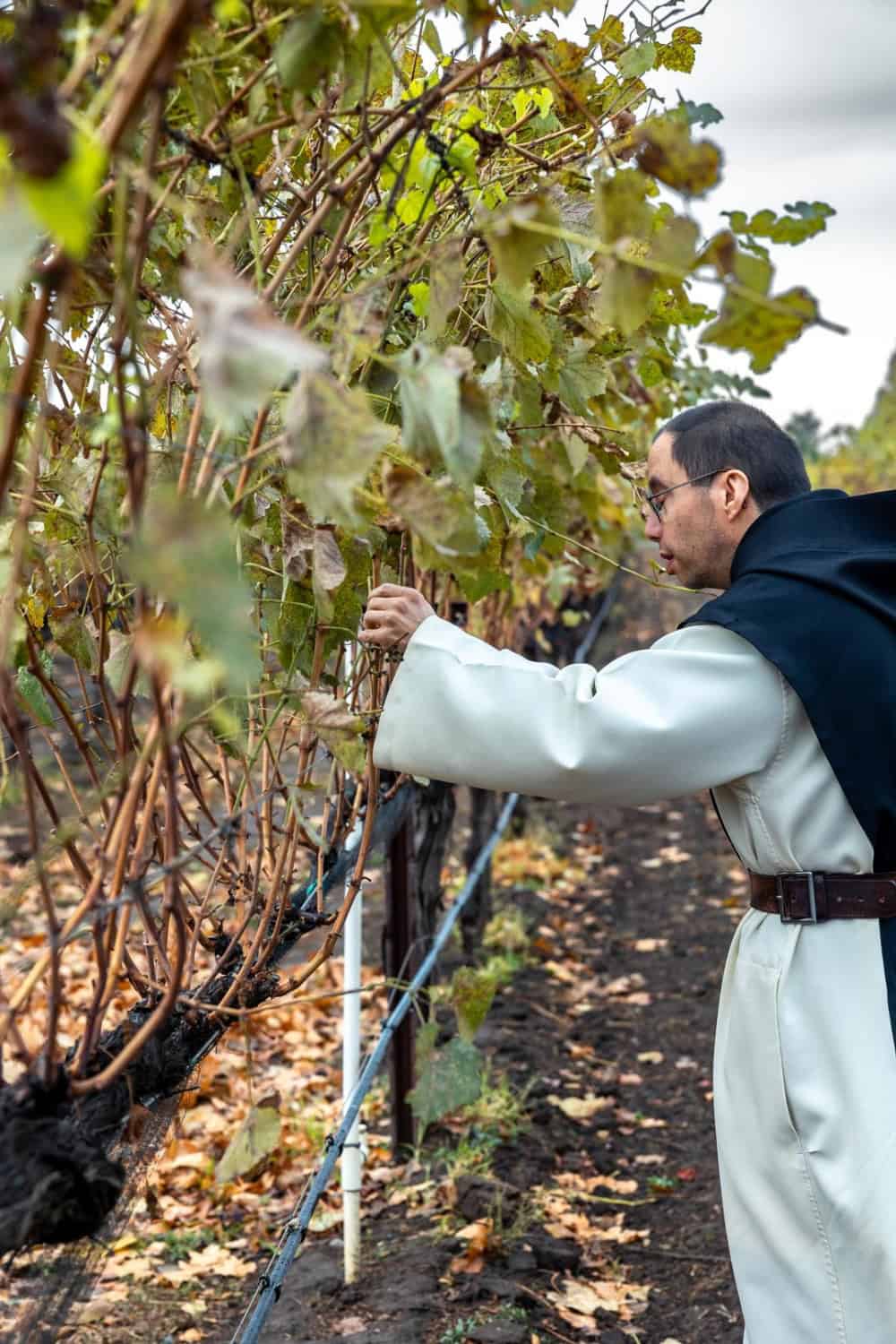
Initially, the monks planned to raise dairy cattle and grow walnuts and prunes. The St. James and Poor Souls vineyards marked the Vina Abbey’s first foray into winemaking – but Cistercian monks have a long history of winemaking and a time-honored commitment to sustainability, which holds true at New Clairvaux. When the monks began growing winegrapes and producing wine, they adhered closely to the sustainable traditions of the Cistercian monks. Cistercian monks are required to take a vow of stability and to “live from the works of their hands”. In most cases, this means they pursue agricultural endeavors, like farming or winemaking. Because they are bound to the land, it is incredibly important that they care for the land and its resources.
Their partners, the Sunseri family, share their commitment to sustainability. Adams explains, “Sustainability begins in the vineyard, but what people don’t understand is that there’s a lot more to sustainability than just growing grapes. So, we collect our water and redistribute it. We are solar. When we make wine, all of that pomace and leftovers from the grapes go to our cattle. We use every bit we can.”
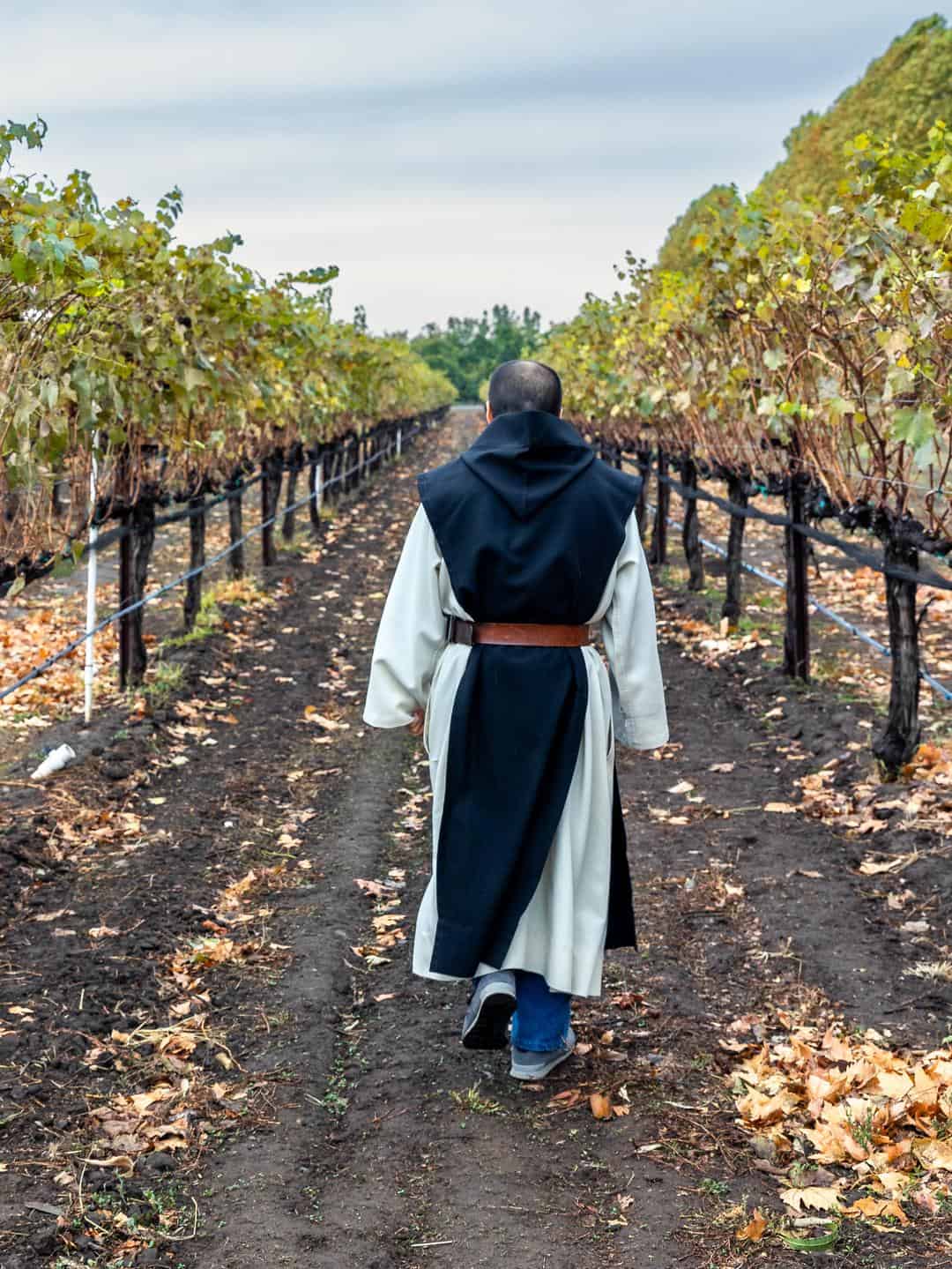
Trappist monks’ contributions to winemaking
Monks have been tied to winemaking since the Middle Ages when they made wine for religious rituals. In fact, the original Trappist vineyard at the Abbey of Cîteaux, Clos Vougeot, is now considered one of the most famous vineyards in the world. Monks are thought to be the first to plant Pinot Noir, Chardonnay and Riesling and are typically credited with the concept of terroir, trellising and leaf thinning.
A present that reflects California’s bright agricultural future
New Clairvaux’s winemaker, Aimée Sunseri, has done a beautiful job of honoring the winery’s past while ushering in a new era. During her tenure as head winemaker at New Clairvaux, she has won countless awards, including Woman Winemaker of the Year in 2023. Her wines have been equally well-received.
How did Aimée Sunseri become winemaker at New Clairvaux Vineyard?
Aimée Sunseri comes from a winemaking family – but her family was based out of Napa. So what led Aimée to Vina, California? Some would say coincidence, some would say fate – but the monks would likely say that it was God’s plan.
New Clairvaux hired Aimée’s father, Phil Sunseri, in the mid-1990s to helm multiple construction projects. While partnering on the construction of the Abbey’s church, Sunseri and Thomas Davis, the head of the monastery, began to consider another intriguing partnership. Sunseri came from a long line of winemakers and owned a property near the monastery. The monks had a long history of winemaking. Perhaps, they thought, they should partner on a winery. The property’s past helped to seal the deal. Given that the monastery was on the site of the historic Great Vina Ranch, Adams recalls, “It seemed like a natural fit.”
Sunseri recruited his then college-aged daughter, Aimée Sunseri, to help plant the vineyards. Aimée fell in love with farming along the way and decided to pursue a career in the wine industry. In 2003, she graduated from the UC Davis Enology program, returning to New Clairvaux. Coincidentally, the monks didn’t have a winemaker, so they agreed to take a chance on Aimée. That gamble paid off – both Aimée and New Clairvaux’s wines have made a name for themselves in the wine world.
What to taste at New Clairvaux
New Clairvaux produces 31 deliciously different wines. While variety may be the spice of life, it can also make it tricky to know where to start.
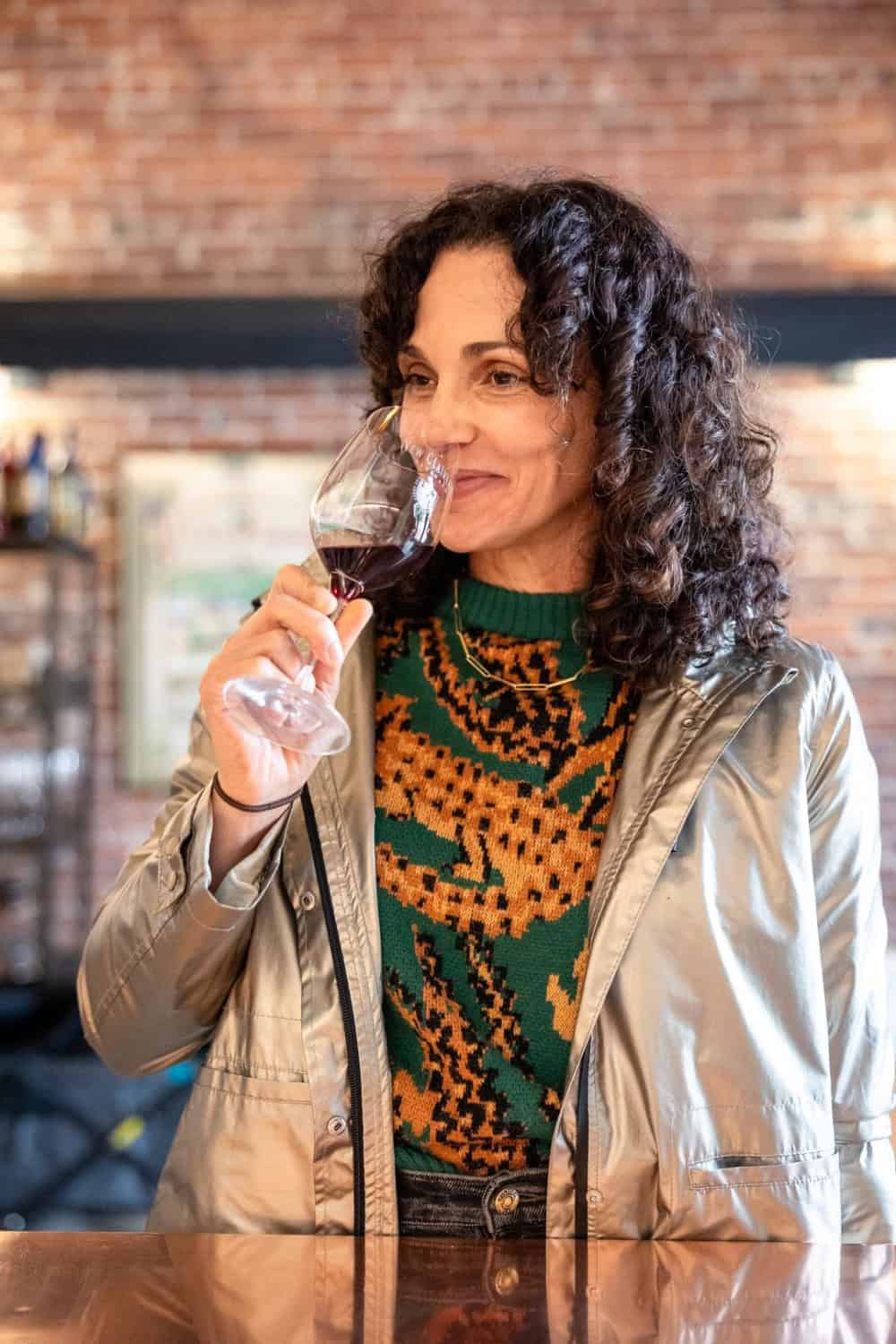
Obviously, you’ll want to taste the Abbey Angelica altar wine. After all, New Clairvaux is California’s only Trappist-Cistercian winery. Wine enthusiasts will enjoy exploring some of New Clairvaux’s more unique offerings, like Assyrtiko and Moschofilero. John Adams also suggests tasting a few of New Clairvaux’s most popular wines: “Our Tempranillo does fantastic. It’s a hot seller. It always has been. I can’t believe I’m gonna tell you this, but our red table wine is by far our most popular wine. Aimee will make three bench trials, and she shares them with the brothers. Then, the brothers will respond with which should be the red table wine. Every year, they seem to get it right! It’s our wine club’s favorite wine.”
Why visit New Clairvaux?
For the wine, of course, but also for one of the most fascinating origin stories we know of.
A past steeped in California winemaking history
The story of New Clairvaux Vineyard begins in 1844 when Peter Lassen received a 22,000-acre land grant from the Mexican governor, forming a massive ranchero where he ran cattle and farmed both cotton and Mission winegrapes. Lassen called it Rancho Bosquejo. A few years later, Lassen lost his ranchero due to some shady business deals, and the property fell into the hands of Henry Gerke, who expanded Lassen’s initial planting of winegrapes and operated a successful winery, shipping wines worldwide and establishing the small town of Vina.
Fast forward to 1881, word of Gerke’s successful winery had spread far and wide, attracting the attention of some very rich, very powerful Californians like Leland Stanford. Stanford was a former California governor and founder of Stanford University. Purchasing the ranch along with additional Vina properties, he rebranded the massive 55,000-acre property as “The Great Vina Ranch”, later gaining recognition as the world’s largest winemaking operation. John Adams enthuses, “We still have some of the buildings that he used. The building where our winemaking operation is used to be his wine cellar. It held more than two million gallons of wine!”
Old land, new purpose
When Stanford died in 1893, The Great Vina Ranch was eventually deeded to his namesake, Stanford University – then eventually sold off in pieces just before the 1920 onset of Prohibition – which decimated the California wine industry. It would be a few decades before the land began to produce again. But after passing between owners, 600 acres of the property was purchased by the Trappist-Cistercian monks – beginning the story of New Clairvaux.
In 1955, a Cistercian abbey in Kentucky was looking to expand, so they informed 27 monks that they would be relocating to Vina. They christened the new monastery New Clairvaux and planned to raise dairy cattle and grow walnuts and prunes. All but one of the monks traveled via train. The outlier, Thomas Davis, took a little longer to get there – but he found his purpose along the way.
Davis spent a few days in San Francisco with his family, where he spotted a crate of stones on a trip to Golden Gate Park – stones that were the remains of a Spanish Cistercian monastery. Thomas Davis believed those stones were destined to be used in the Vina monastery.
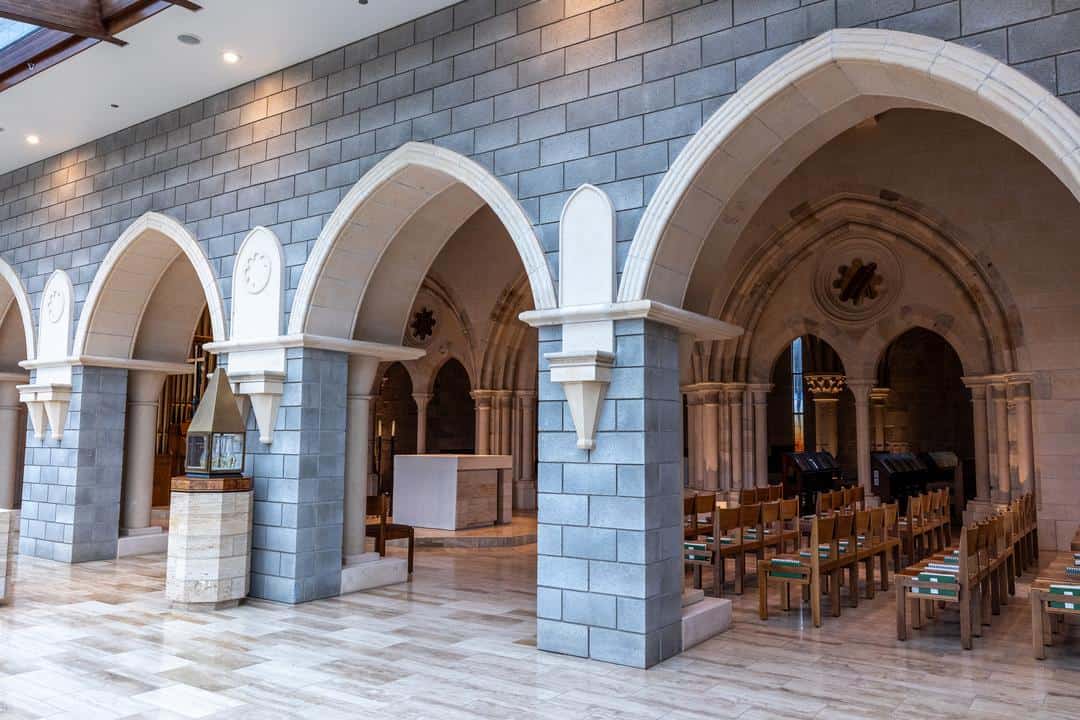
It was a long and winding road, but Davis’ vision eventually came to pass. In 1994, after years of unsuccessful bids, the City of San Francisco sold the stones to New Clairvaux…for a dollar. There was only one condition: the stones had to be used to construct a building that was open to the public. Today, visitors to New Clairvaux will find the stones integrated into Abbey’s church.
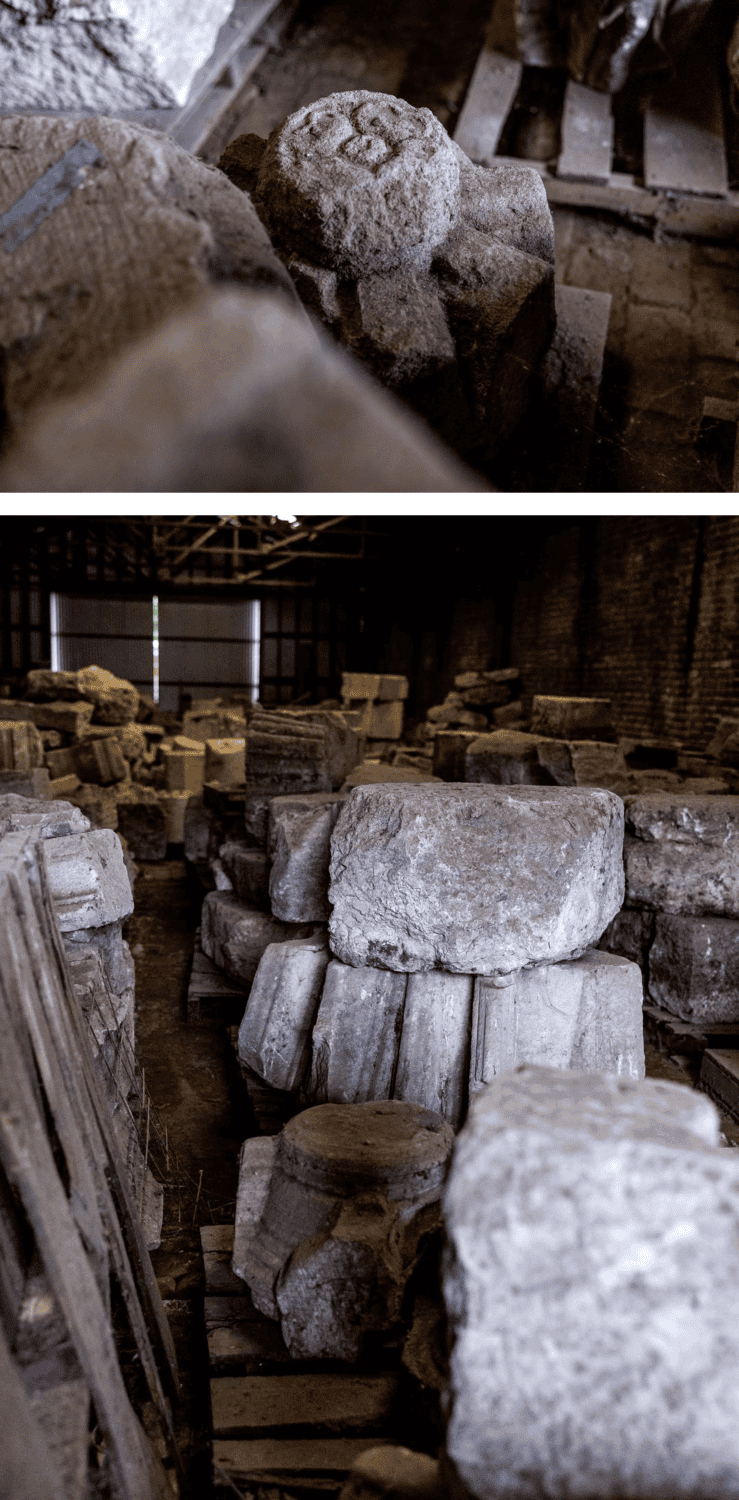
Why were stones from a Cistercian monastery in Golden Gate Park?
Finding crates of stones from a Spanish Cistercian monastery seems a little… unusual. So, why were they there in the first place? The answer involves yet another historic Californian, William Randolph Hearst. You’ve likely heard of Hearst’s most famous property, Hearst Castle, but it’s a lesser-known fact that he’d planned to build a second.
In 1933, Hearst purchased the Spanish Cistercian monastery, disassembled it, and shipped the stones by boat all the way to San Francisco. He planned to use those stones to build a castle in Northern California called Wyntoon. As the Great Depression continued to ravage America, Hearst was forced to change his plans. He “gave” the stones to the City of San Fransisco to avoid paying 25,000 in storage fees. The crates of stones were trucked to a few different locations within Golden Gate Park, and there they stayed for almost 60 years!
Visit New Clairvaux Vineyard!
Whether you’re excited to taste some of California’s most intriguing wines or simply intrigued by the history, it’s time to start planning your visit to New Clairvaux Vineyard!
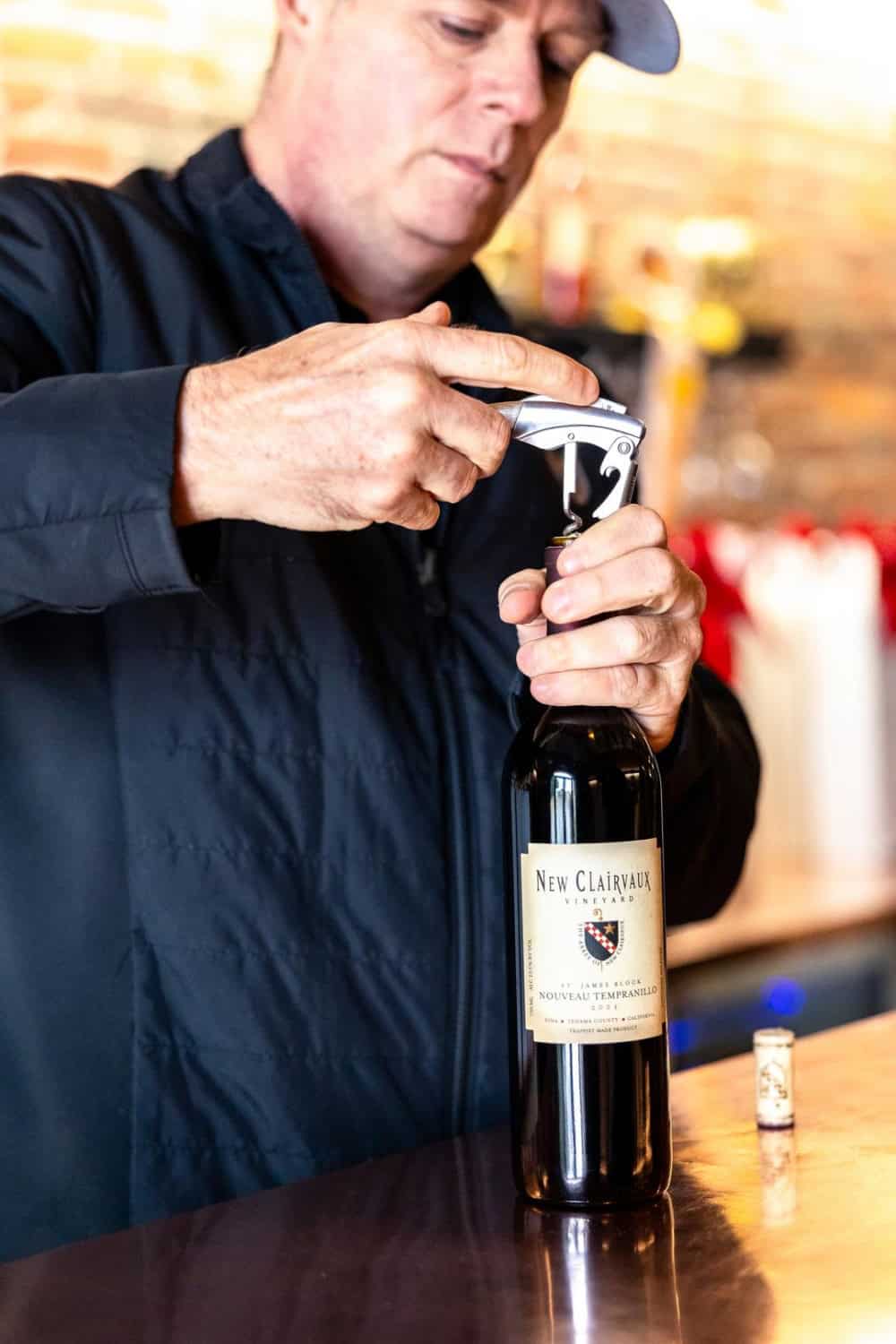
26240 7th Street
PO Box 80
Vina, CA 96092
530.839.2200
Open daily 11 am-5 pm
If you’re farther north, check out their Redding tasting room!
1551 Market Street #102
Redding, CA 96001
on Butte Street between Market & Pine
Open 1 pm – 7 pm (closed Mon/Tues)
What to do in Vina, California
Are you ready to start planning your visit to the historic New Clairvaux Vineyard? John Adams suggests a few additions to your itinerary: “If somebody wants to come and visit New Clairvaux and they wanna see other things in the area, there’s a great restaurant just down the street called the Lassen Steakhouse. People typically put that in one little package when they visit. We’re not that far from Mount Lassen, and so a lot of people from Lassen National Park come and visit us on the way to or from Lassen National Park.”
Heading to New Clairvaux Winery? Add these nearby farms and shops to your itinerary!
Heading north of Sacramento? Here are a few of our favorite destinations in Tehama and surrounding counties. Looking for even more inspo? Check out our Ultimate Agritourism Guide to Butte County and Beyond.
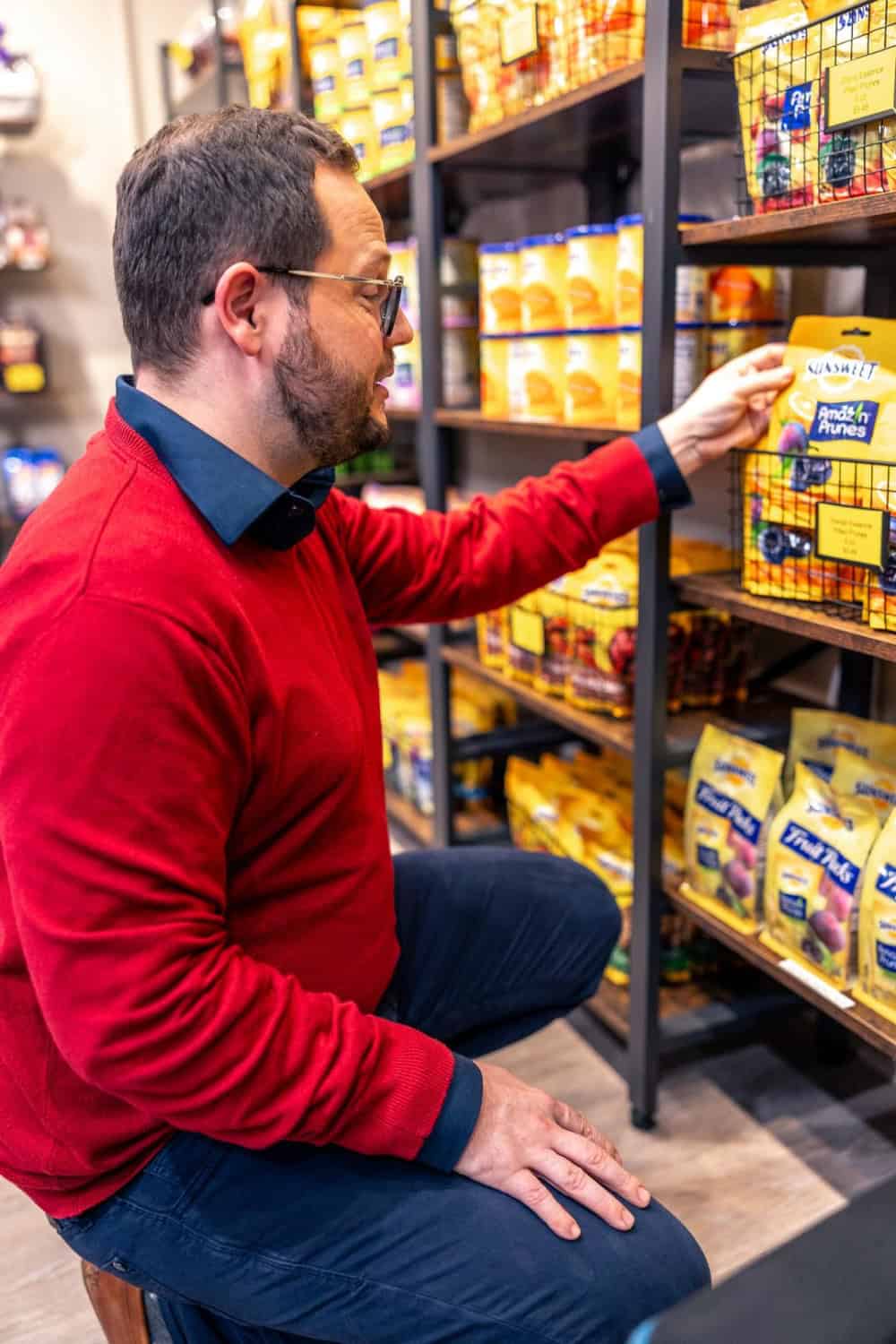
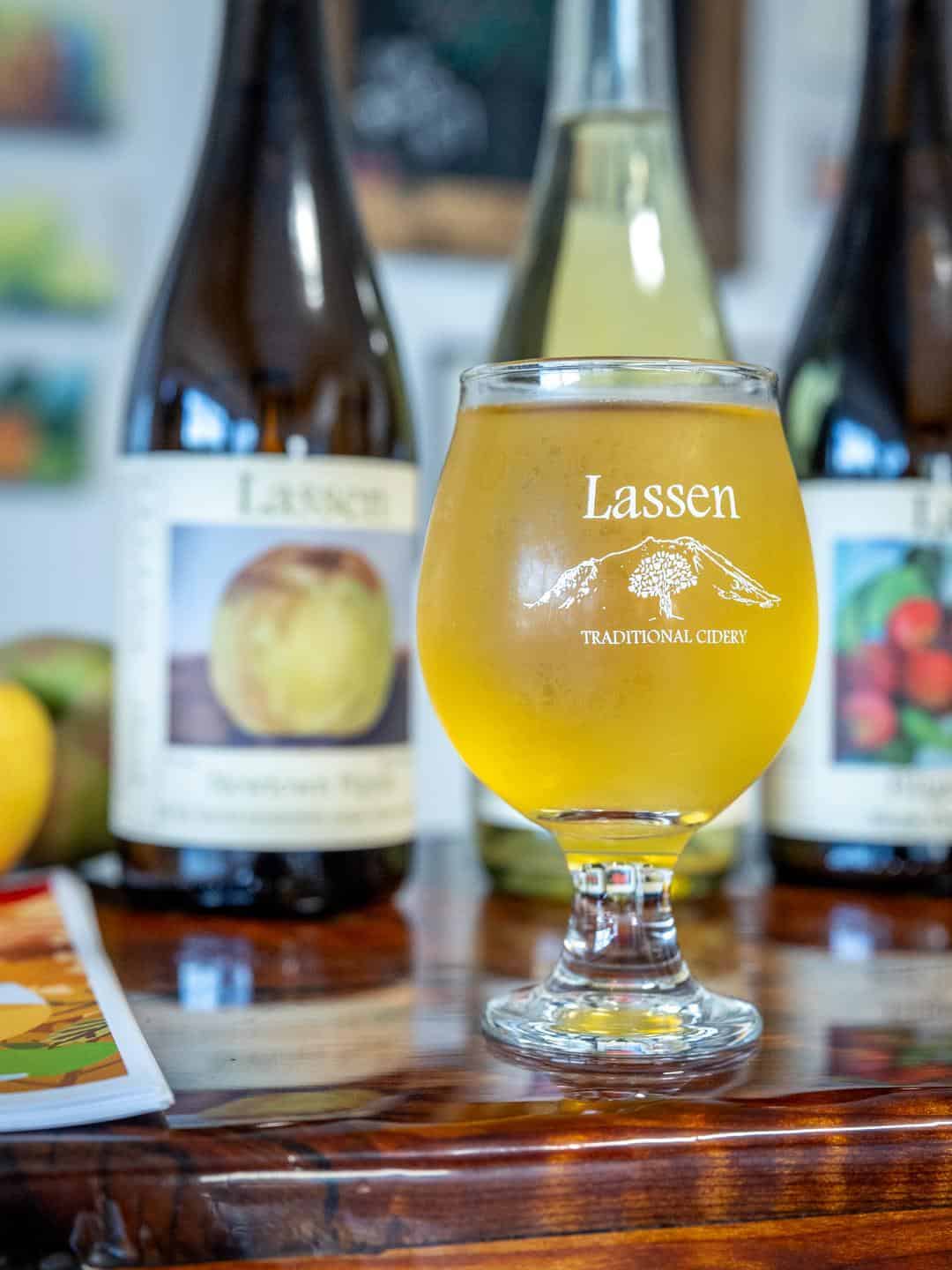
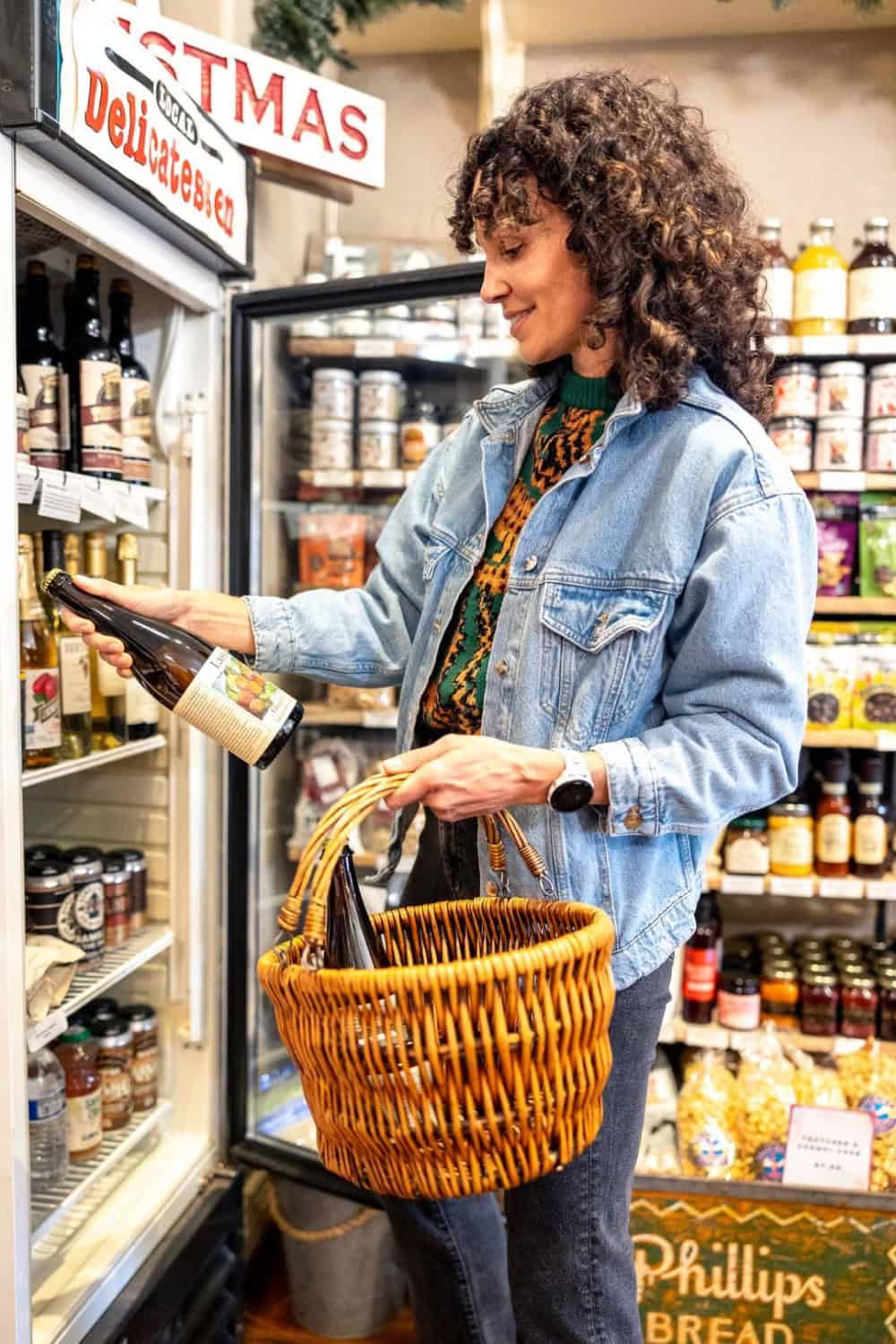
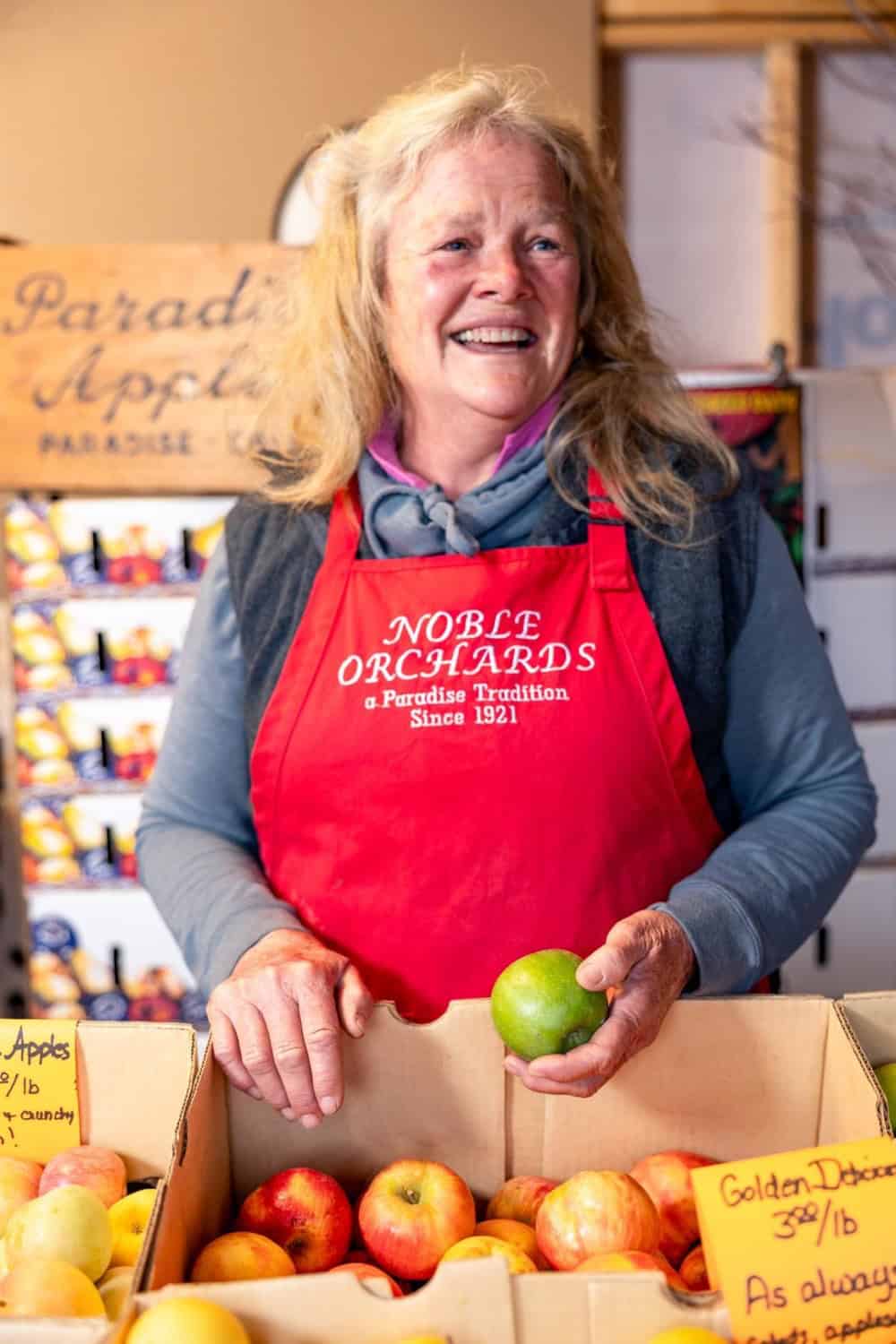
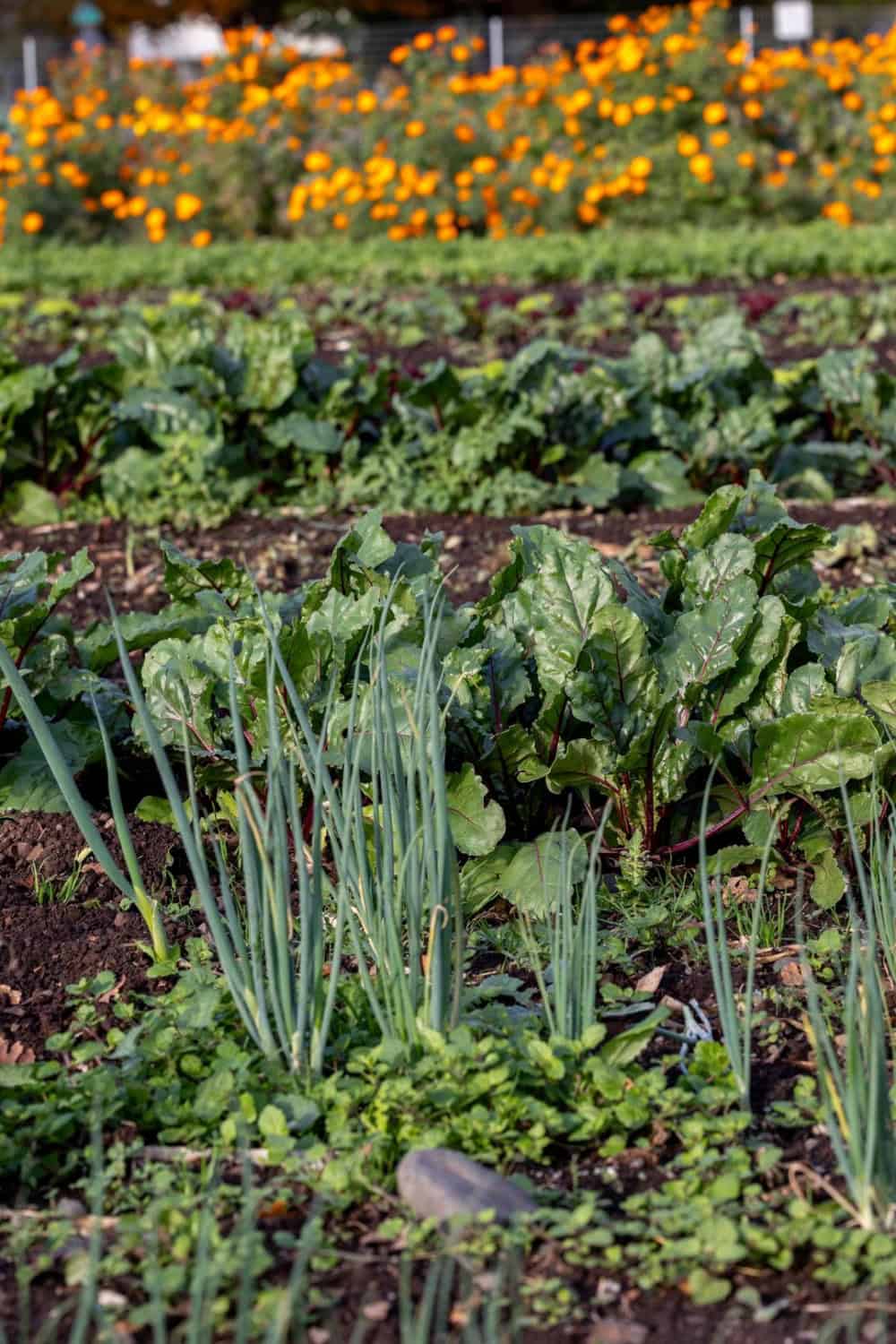
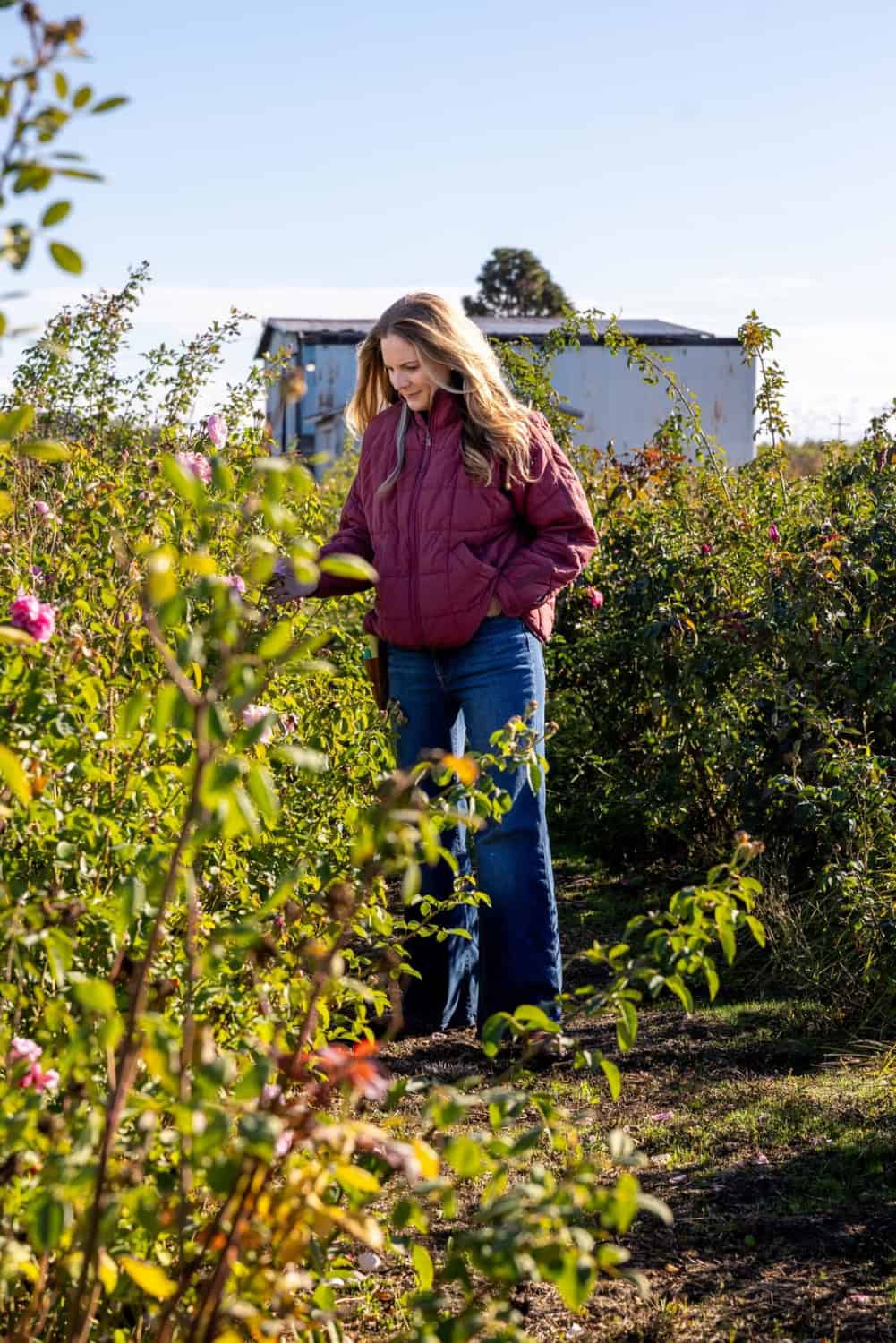
Article and photography by Hilary Rance.
